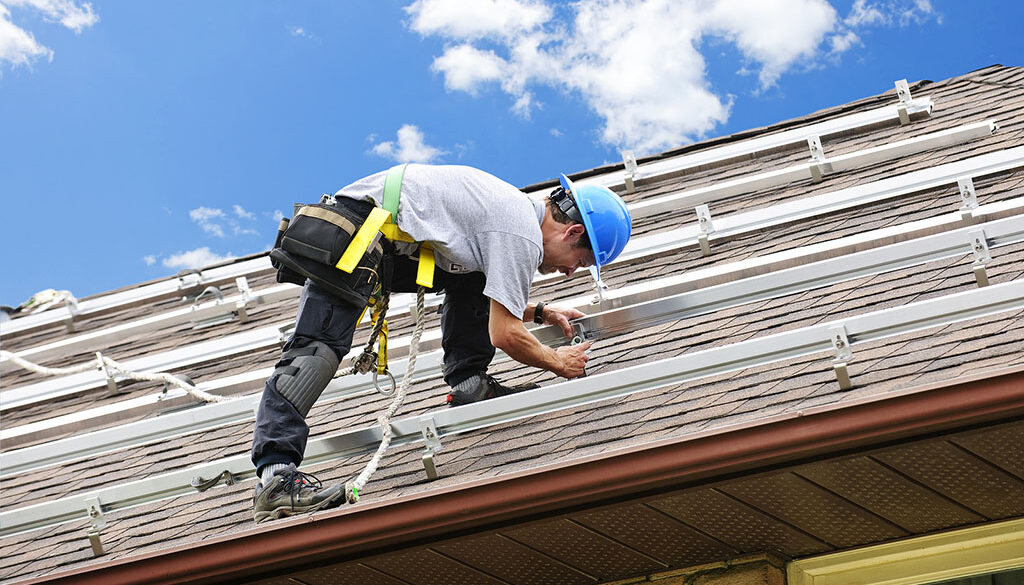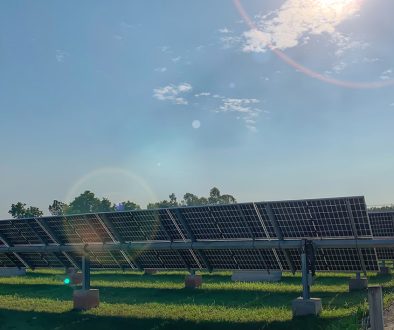5 Ways to Prevent Rust on Solar Mounting Systems With Galvanizing
Solar panels are a sleek solution for homes and businesses that want to use a green source of energy. But, rust on solar mounting systems can quickly ruin their appearance and hurt their lifespan.
Solar panel systems only have a few parts. These include the panels themselves, their mounts, and their electrical components. The electrical components can only convert and direct energy if the panels are working as intended. When the panels are not in good condition, then they are not able to absorb enough sun to fuel the power system.
Rust is one of the main threats to both the functionality and appearance of solar panel systems. Preventing solar panel rust should be the first priority when choosing the style and make-up of the system’s components.
Galvanized steel continues to outperform the other solar panel material options on the market. Its unique self-healing qualities make it resilient in harsh conditions.
There are five ways you can use galvanizing to keep your solar mounting systems rust-free. To understand them, you need to know a little more about both rust and galvanizing first.
Understanding Rust and Its Impact
Rust is a muddy reddish-brown substance that results from the corrosion of iron. When an iron object stays wet while out in the open air, the oxygen and iron react. This reaction is called oxidation. As the oxidation happens, the iron weakens and the corroded material turns into rust.
The threat of oxygen corroding wet iron is why rusty solar mounting systems can be a real problem. Because the panels are outside, their mounts are exposed to the elements, absorbing rain, melting snow, and even humidity. This makes them a prime candidate for rusting. Rust is a sign of weakened metal. If your solar panel mounts are rusting, they are becoming weaker. This can threaten the safety and usability of the panels.
As the mounts weaken, the positioning of the panels can become shifty. Their resilience in wind and storms can also decrease. This can lead to more frequent repairs and system issues.
The Role of Galvanizing in Corrosion Protection
One of the best ways to prevent rust on solar mounting systems is to make sure their materials have built-in protection against the elements. This is where galvanizing comes in to save the day.
Hot-dip galvanizing is a process by which raw steel is cleaned then immersed in molten zinc. Once the zinc cools from the 850 degrees it reaches during the galvanizing process, the metallic bond of zinc and steel is harder than the original steel.
To explain why galvanizing is the perfect choice for solar panels, it’s important to look at what factors cause solar panels to corrode. The two main elements that can wear down solar panel systems are heat and moisture. Extreme heat from sun and UV light can mar weaker metals. At the same time, moisture can corrode bare metals or those with fragile coatings.
Galvanized materials have two unique properties that help them withstand corrosion: barrier protection and sacrificial protection. Once steel goes through the galvanizing process, the resulting material is stronger because of the chemical bond between the zinc and iron. This forms a barrier that is very resistant to scratching and damage.
Should anything damage the outside coating, the zinc will allow itself to corrode instead of the steel. The corroded zinc materials then serve to reseal the coating. These protections ensure the integrity of any project that uses galvanized materials, including solar panel mounts.
The Galvanizing Process
So, how does galvanizing turn steel into a superpower building material, one of the best for solar panel corrosion protection? It takes three steps: preparing the surface, hot-dip galvanizing the steel, then allowing it to cool before completing the final inspection.
To prepare the steel, parts are dipped in a caustic cleaner to remove light oil, dirt, and grime. The parts are then dipped in acid to remove rust and mill scale. This leaves the steel clean and receptive to creating the metallurgical bond between the steel and zinc.
The treated steel is then immersed in a vat of molten zinc. This is what the “hot-dip” in the name of the material means. Finally, it is set aside to allow the new zinc coating to cool and harden. Once dry, the materials are inspected to make sure the coating is thick enough and without issue.
It is important to work with a company that follows the highest industry standards through every step of the galvanizing process. Skipping or rushing through the galvanizing process can result in subpar materials. To read more about how to choose a good company from the galvanized steel suppliers for solar panel materials in your area, check out this post: southatlanticllc.com/blog/how-to-choose-the-right-galvanizer
Choosing the Right Galvanizing for Solar Mounting Systems
Now, you understand what factors cause solar panels to corrode and why galvanized materials are the best at preventing solar panel rust. It’s time to look at what types of materials are best for solar panel mounting systems.
In general, solar panels are mounted either on the ground or on a roof. For the ground mounting systems, you need anchors, mounting poles, the base of the systems, and the brackets to attach the solar panels themselves. For the rooftop systems, a combination of rails, clamps, and hooks forms the base of the mounting system. It also uses brackets to attach the panels themselves, and can include flashings, which help keep water from collecting between the roof and the mounting system.
For many of these parts, you can choose between aluminum and steel. But as we’ve explained so far, weaker materials like aluminum are going to wear down faster and hurt the lifespan of the entire solar panel system. For superior solar panel corrosion protection, galvanized materials are the best choice wherever possible.
The best sizes and weights to choose when assembling your solar mounting systems will depend on what type of set up you’re installing. Will your panels be in a difficult environment, like one with regular snowfall, intense periods of UV light, or saltwater in the air? How much do the panels need to be able to pivot throughout the day? How large and heavy are the panels the solar mounting systems need to hold?
Understanding all of these things will help you choose materials that will prevent rust on solar mounting systems.
Maintenance Tips for for Galvanized Solar Mounting Systems
To recap, five ways galvanized steel can prevent solar panel corrosion are:
- By having an almost impenetrable zinc coating that does not wear down or rust
- By having self-healing properties through the zinc’s sacrificial protection
- By being stronger than aluminum or bare steel because of the chemical bond created between steel and zinc
- By having a life span that is often greater than the solar panels themselves
The final way it prevents solar panel mount corrosion is by being practically maintenance-free! While it is a good idea to inspect the mounts and panels after storms or intense weather seasons for any cracks or signs of obvious wear, damage to the galvanized materials is unlikely. When it does occur, it is best to call the manufacturer so you can repair them in a way that preserves their overall integrity.
Looking for Galvanized Steel Suppliers for Solar Parts? Look No Further Than South Atlantic!
The safety of your solar panels depends on the quality of their mounting systems. That is why you want to use the best galvanized steel on the market. At South Atlantic, we’ve built our 50-year reputation on producing superior hot-dip galvanized materials perfect for any project. From a strict adherence to ASTM standards to an industry-leading 25-point QA process, we do not ship materials that are anything less than perfect.
When your materials are ready to go, we oversee the entire journey, whether you are down the road or across the country. This way, you can count on your galvanized materials arriving without damage or delay.
Request a custom quote for your next solar project today and experience how smooth and easy the process can be!


